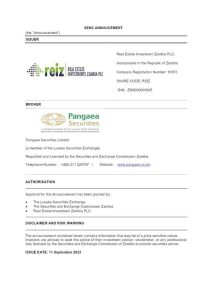
Introduction
In a world where age is no longer a limiting factor, senior-friendly housing is rising to meet the demands of an aging population. This growing trend enables older adults to age in place gracefully, ensuring they can enjoy their golden years with comfort, independence, and dignity. In this article, we invite you to explore the increasing demand for senior-friendly housing options and how they are reshaping the housing market. Join us on this enlightening journey, guided by industry expert Ron Terwilliger. Ron, a prominent figure in the world of real estate, will unveil the transformative impact of senior-friendly housing and the exciting opportunities it presents for older adults. Whether you’re a senior seeking a comfortable and sustainable home or a family member looking for the perfect place for your loved ones, this article will empower you with insights that can redefine your approach to senior living.
Meet Ron Terwilliger: Your Guide to Senior-Friendly Housing
Ron Terwilliger is more than just a name; it signifies a legacy in real estate investment. With over four decades of experience, Ron boasts an impressive track record in the industry. As the former CEO of Trammell Crow Residential and a dedicated philanthropist, he’s committed to advancing affordable housing initiatives. Ron’s insights are a treasure trove for anyone looking to navigate the evolving world of senior-friendly housing.
The Rising Demand for Senior-Friendly Housing
Before we delve into the details, let’s understand the driving forces behind the increasing demand for senior-friendly housing.
Table: Factors Fueling the Demand for Senior-Friendly Housing
| Factor | Impact |
|---|---|
| Aging Population | Growing number of seniors seeking comfortable living options |
| Desire for Independence | A strong desire among seniors to maintain their autonomy |
| Advancements in Design | Innovative housing designs catering to senior needs |
| Supportive Services | Availability of services that facilitate aging in place |
This table succinctly outlines the key factors contributing to the rising demand for senior-friendly housing and the growing appeal of aging in place gracefully.
The Transformative Impact of Senior-Friendly Housing
Senior-friendly housing is not just meeting demand; it’s transforming the way seniors experience their later years. Ron explores how these innovative housing options are reshaping the aging process.
Table: Key Transformations in Senior-Friendly Housing
| Transformation | Impact |
|---|---|
| Independence | Empowering seniors to age gracefully with dignity |
| Community | Fostering a sense of belonging and social interaction |
| Safety | Providing secure and accessible living environments |
| Quality of Life | Enhancing overall well-being through tailored amenities |

This table provides a roadmap to understanding the essential transformations in senior-friendly housing, illustrating how these elements work together to redefine the experience of aging in place.
Beyond Housing: The Broader Impact
Senior-friendly housing isn’t just about comfortable living; it has a broader impact on the lives of seniors and their communities.
Table: Benefits of Senior-Friendly Housing
| Benefit | Impact |
|---|---|
| Enhanced Well-Being | Improved physical and mental health for seniors |
| Family Peace of Mind | Reassurance for families knowing their loved ones are safe |
| Community Integration | Seniors becoming active members of their communities |
| Economic Growth | Contribution to local economies through senior-friendly developments |
This table delineates how senior-friendly housing extends its benefits beyond individual residents, positively impacting overall well-being, family dynamics, community integration, and local economies.
Your Journey to Aging in Place: A Roadmap
Ready to embark on a journey to explore senior-friendly housing for yourself or assist your loved ones in their search? Ron provides a roadmap for seniors and their families.
Table: Roadmap to Aging in Place Gracefully
| Stage | Action |
|---|---|
| Assessment | Evaluate current living situation and needs |
| Research | Explore available senior-friendly housing options |
| Selection | Choose a housing solution that suits your aging in place lifestyle |
| Transition | Smoothly transition to your new aging in place home |
This table serves as a practical guide for seniors and their families considering senior-friendly housing, breaking down the journey into actionable stages.
Conclusion
As you’ve ventured through the transformative impact of senior-friendly housing guided by Ron Terwilliger, you’ve witnessed a profound shift in the way we approach aging in place. Senior-friendly housing and the concept of “staying put” are not just trends; they represent a new era of senior living. With its focus on independence, community, safety, and quality of life, senior-friendly housing offers a path to graceful aging in place that was once unimaginable.
Senior-friendly housing isn’t just about comfortable living; it’s about enhancing well-being, providing peace of mind to families, fostering community integration, and contributing to local economies. So, are you ready to embrace this revolutionary approach to aging in place gracefully through senior-friendly housing? Join the movement, explore new horizons, and embark on a journey that promises a dignified and fulfilling aging experience. The demand for senior-friendly housing is rising, and it’s all about “Staying Put: The Increasing Demand for Senior-Friendly Housing.” Your journey begins now.
















